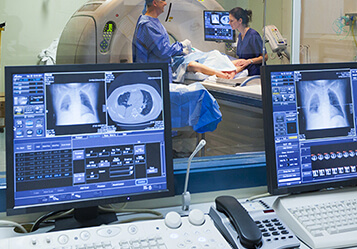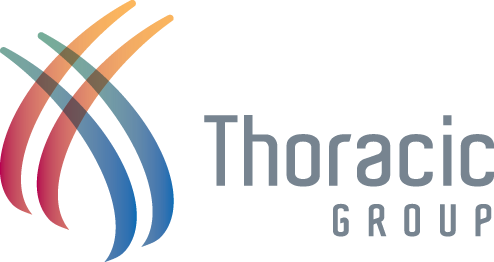Lung Cancer Screenings
Who Qualifies?
If you are a member of one of the following high risk groups, the National Comprehensive Cancer Network recommends that you should undergo an annual LDCT chest scan. By 2015, affordable care legislation mandates that health insurance companies provide coverage for members who fall in one of two high risk groups. These two groups are:
Those who:
- Are greater than or equal to 55 years old
- Have a smoking history greater than or equal to 30 pack years*
- Are currently smoking or have quit within the last 15 years
Those who:
- Are greater than or equal to 50 years old
- Have a smoking history greater than or equal to 20 pack years*
- Have one of the following additional risk factors:
- Radon exposure
- Family history of lung cancer
- History of lung disease (COPD or pulmonary fibrosis)
- Contact with asbestos or other cancer causing agents (coal smoke, soot, silica, diesel fumes, arsenic, beryllium, cadmium, chromium, and nickel)
- History of another smoking related cancer, or radiation therapy in the chest for another cancer
*Pack year= Number of packs per day x years of smoking (Example: 1.5 packs per day for 30 years = 45 pack year smoking history)
 Studies show that annual Low Dose Computed Tomography (LDCT) screening in high risk groups can increase survival rates for lung cancer by at least 20%. Cancer screening is commonly performed for breast and prostate cancer, but until recently, lung cancer was not included in this group. With more awareness of the screening programs available, more patients can participate. The LDCT scans are highly sensitive and can show lung abnormalities that are as small as a grain of rice. When lung cancer is caught early enough, patients are able to receive treatment earlier and therefore have higher success rates and better prognoses.
Studies show that annual Low Dose Computed Tomography (LDCT) screening in high risk groups can increase survival rates for lung cancer by at least 20%. Cancer screening is commonly performed for breast and prostate cancer, but until recently, lung cancer was not included in this group. With more awareness of the screening programs available, more patients can participate. The LDCT scans are highly sensitive and can show lung abnormalities that are as small as a grain of rice. When lung cancer is caught early enough, patients are able to receive treatment earlier and therefore have higher success rates and better prognoses.
What is the Scanning Procedure?
The screening is very simple, and takes place in about five to seven minutes. The scan works by taking images of slices of your lungs and then compiling them to create a three-dimensional image. Rather than an x-ray that only shows two views of your chest, the LDCT gets a fuller picture of your lungs and chest, and shows abnormalities that x-rays do not have the sensitivity to detect.
Where Can I Find One?
Even if you do not fit in one of the high risk groups, you can contact us if you feel a lung cancer screening would be beneficial for your health. If you are looking for a hospital that offers a lung cancer screening program near you, we can provide you with more information.
Multidisciplinary teams comprised of thoracic surgeons, pulmonologists, radiologists, oncologists, and nurse navigators review all positive findings to make a treatment recommendation for each patient. Thoracic Group surgeons participate in several multidisciplinary team programs and have decades of experience in minimally invasive surgical treatment.
